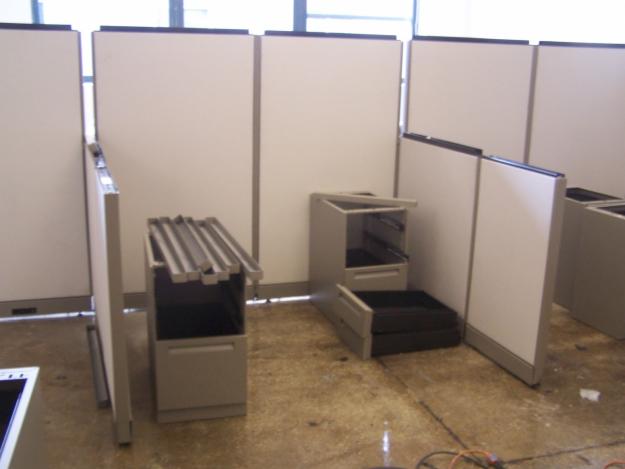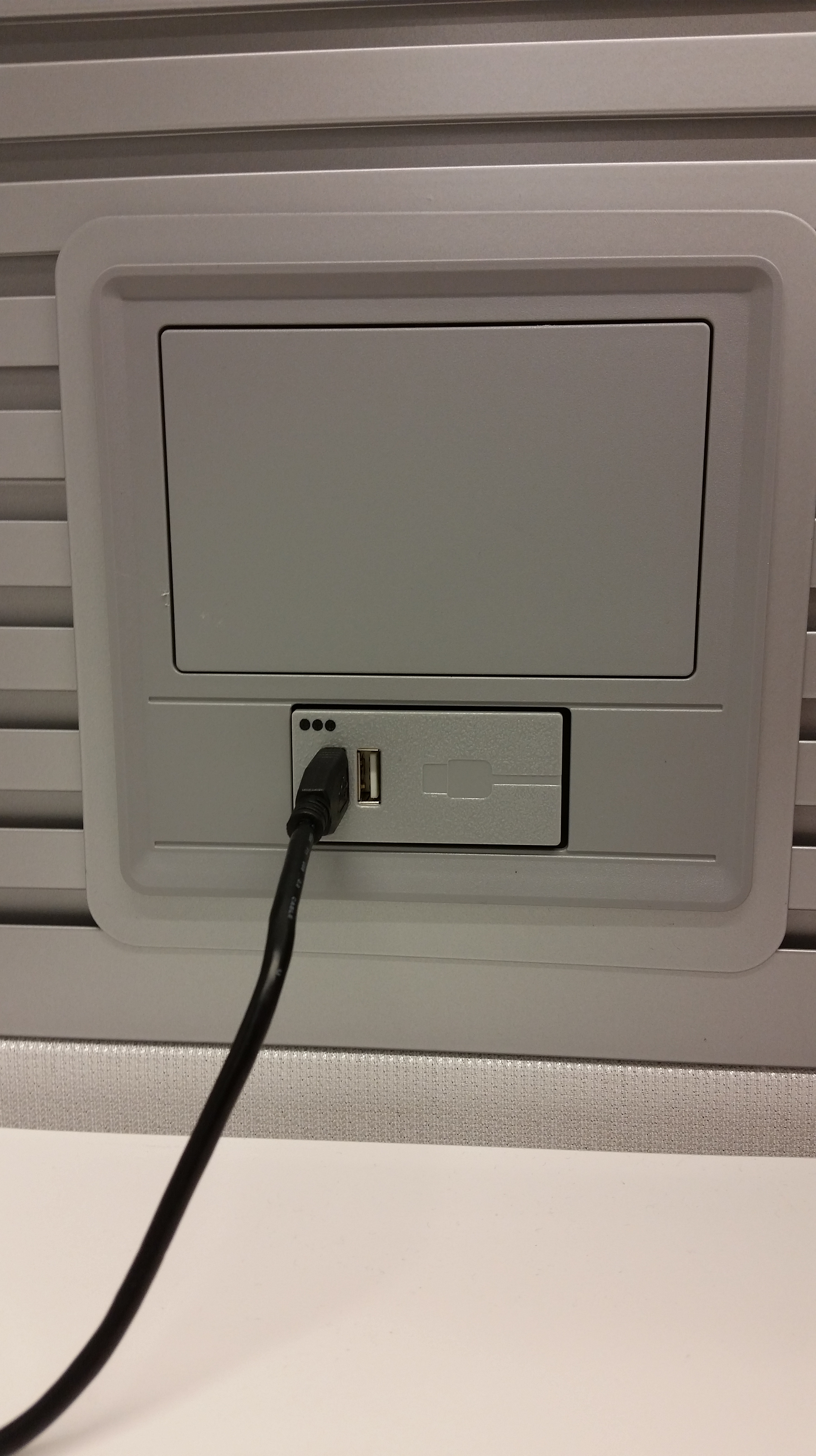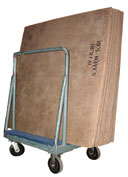When companies vacate a premises these days, it is normally too expensive to bring the furniture with them as they can get new furniture without the hassle at similar costs. And there is a morale booster in staff getting new furniture. If you can get your hands on furniture that has been “left behind” by a corporate company you normally will get extraordinary value.
Is used systems furniture the way to go? On average a new cubicle is $5-6 thousand, refurbished are about $2-3 thousand.
Used furniture, particularly modular is a good way to reduce costs but would not be applicable in all situations. It is essential that the furniture you buy matches with your existing office decor, cabling requirements etc. It is best if an entire floor or large section is done at a time. Used furniture is not a good option where company branding and image is important.
Some considerations: Make sure any new furniture you buy matches your existing; when buying systems include your IT staff and cabling vendor in the discussion as some older systems can’t hold as much wire, or may have sharp turns that aren’t friendly to things like stiff Cat 6e cabling. Most older workstations are designed to accommodate the very large, CRT’s from several years ago. Nowadays, most people have wide-screen flat screens (sometimes two), which may allow you to use a smaller cubicle footprint.
Previously owned furniture can be missing keys for the furniture locks. However, most furniture vendors or www.EasyKeys.com provide office furniture replacement keys, lock cores, desk locks, key blanks, and other items to make projects easier.
There is an abundance of great used product out there. Partner with an experienced furniture vendor to help you find it, procure it, transfer and build it. Partner with an experienced design architect to help you tie in the color/feel with the work environment and company brand. And consider storing a few spare parts and pieces for future repairs.
Discover more from Helping NYC & Long Island Commercial Tenants, Owners, and Developers
Subscribe to get the latest posts sent to your email.






Here is a piece of advice I provide all my clients who intend to use secondhand office assets.
In Canada, office furniture needs to be CSA approved, (Canadian Standards Association). This approval is mostly to ensure it is appropriately fire rated and does not contain any harmful chemicals in its production. I have heard of offices inheriting or purchasing non-CSA approved furniture that was brought in from outside Canada and then having to remove it… absorbing the initial cost of the assets and then also the disposal costs.
We are seeing companies that have come up with an 80 20 plan. They own 80 percent of their furniture and are renting 20 % to allow for changes as their business expands and contracts. This eliminates paying for storage of furniture when it is not needed.
We are partnered with a great source for quality pre-owned furniture and really have seen the value in being able to provide a “blending” of items to fit any budget and functionality for our clients. Being able to provide solutions with quality pre-owned products have really enhanced the new furniture solutions that we go to market with day-in and day-out. The circle of services that we are able to provide to our clients has really allowed us a great piece of the “pie” and has allowed us to be able to stay in front of our customers longer and has helped us continue to develop long standing relationships in our market.
If your organization does decide to purchase used or refurbished systems furniture, stick with a major line such as Herman Miller AO2, Haworth Unigroup, or Steelcase 9000. These lines are typically worth reusing since they were the high end quality when first purchased which means they were built well to begin with and likely worth reusing. A reputable refurbisher wouldn’t recommend refurbishing or reusing an entry level brand since the quality just isn’t there to justify reusing the furniture. The high end lines are more commonly found on the used market so it is typically easier to add on to in the future. When purchasing used systems furniture, make sure you are sticking with a high end manufacturer and a long running series of furniture (a series that was produced for a number of years because there is more of it out there than series that were only produced for a few years and phased out).
Whether you purchase new, used, or refurbished, there is always the risk that the fabric or laminate will be discontinued so don’t let that one factor alone determine whether you will purchase new or used because either way, you may end up in the same discontinued boat in the future when trying to match up to existing.
This is not a smart solution by any measure unless you are building a new facility have furniture on order for that environment and are in a temp space where you just need it furnished for really down and dirty and for a very short time. And if that is the case then just lease the furniture don’t buy it. Furniture is vital to the function of a company…how employees communicate, work is executed, and technology is integrated, it is far beyond just aesthetics. You can not achieve growth, flexibility and the need to meet constant demands and changes of the corporate market place by having tools that render limitations. And used product has the highest amount of limitations. The fact is not enough companies view furniture as a tool – but it is! And just like that computer on your desk, you wouldn’t buy up used laptops from the late 90’s running on an outdated operating system so why would you throw money at an inadequate furniture “solution?”
I caution companies from thinking that designers & architects are the source for fully understanding all aspects of furniture and especially how it will work on a detailed level with an organization. Additionally, dealerships are not much better as they are namely looking for a sale. (I can make both of these comments as in my career I have held equal time in both environments as a designer and in furniture sales –so please don’t be offended.) If you don’t have a learned facilities person within your organization you need to reach out to a true space planning firm. They can honestly help you determine the best route. Sometimes what looks financially viable up front can have very costly repercussions in the end. Just having a desk to sit at doesn’t mean you have a “working” environment.
You have to do it !
Than you make a open space with the focus on a work environment and not a workplace . Something like an ordinate chaos with a mission an vision…..You can restyle the old furniture !
I will do this projects with pleasure….Just look and feel before we go to work.
Suggestion is to search out the leading national new and pre-owned solution providers; most have spaceplanners, designers and architects on staff. Many will provide full 2 and 3-D renderings and provide state of the art pre-owned open plan solutions. My company TradeIn.com has 26 years of professional experience buying, selling, designing and offering complete turnkey solutions. We offer a program of zero cost relocation program as well. look forward to further conversation. Jon Driscoll, President, TradeIn.com
Great insight – I am often asked about used furniture as the client feels they are saving money. Another option is to move to an open plan environment. The per position cost is significantly lower than traditional cubicles. It also maximizes use of the space.
Agreed. We’re seeing more requests for open plan. However, there’s much hesitation due to fears of noise and distraction.